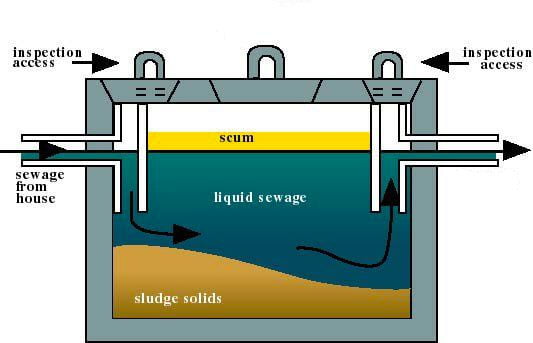Onsite sewage disposal is an important factor to be considered in every home, especially for properties that are not connected to a public sewer network. For such properties, septic tanks are fitted in order to dispose of all domestic sewage in the correct and environmentally friendly way. When you are having a septic tank fitted, there are a number of important considerations that you should look out for. Let’s take a look at some of them…
- Size
As obvious as it may sound, when you are getting a septic tank fitted, it is important that you select the correct size tank. The size of your septic tank is dependent on the square footage of your home, the number of occupants that live there and the number of water saving fixtures that have been installed. As a guideline, an average household of four people requires a septic tank of approximately 1500 gallons.
- Type of soil
The area in which you intend having your septic tank fitted requires extensive testing for suitability. To get accurate results and readings, expert personnel carry out tests known as percolation tests on the soil in that specific area. All septic tanks require an absorption field and if the soil is not compatible for use with a septic tank, then you will run into major problems with your septic tank in the future. The best type of soil for septic tanks is sandy or well-drained soils, as these will aid the soak away of effluent from your septic tank.
- Cost
When you are having a septic tank fitted, you need to be aware of the budget that you’ve got to work with for the project. Firstly, the cost of the installation will be determined by the type of septic tank you are having fitted. Tanks are available in fibreglass and plastic (which are usually globe-shaped) and are also available in concrete (which are usually rectangular shaped). The cost of your septic tank will depend on the size and type of tank you select. In addition, you should also budget for costs associated with the septic tank installation such as the building of the percolation area, piping and the labour costs that will be involved.
- Maintenance
Before you have a septic tank built-in, you should be aware of the maintenance involved in owning and operating the unit. A septic tank requires emptying or de-sludging on a regular basis and how often depends on the size of your tank and its frequency of use. As a rule of thumb, the majority of septic tanks should be emptied every one to two years.
- Certification
As with most projects like this, certification is an important consideration when having a septic tank installed. In order to comply with local regulations and legislation, you should ensure that the contractor you hire to install the system is qualified to do so and that all work that is carried out is fully certified to the necessary standards.
Septic tanks are responsible for the collection and breaking down of domestic wastewater, which means that they play a big part in the smooth running of your home. Taking these factors into consideration prior to its installation reduces any potential problems for you and ensures that your septic tank operates efficiently.

